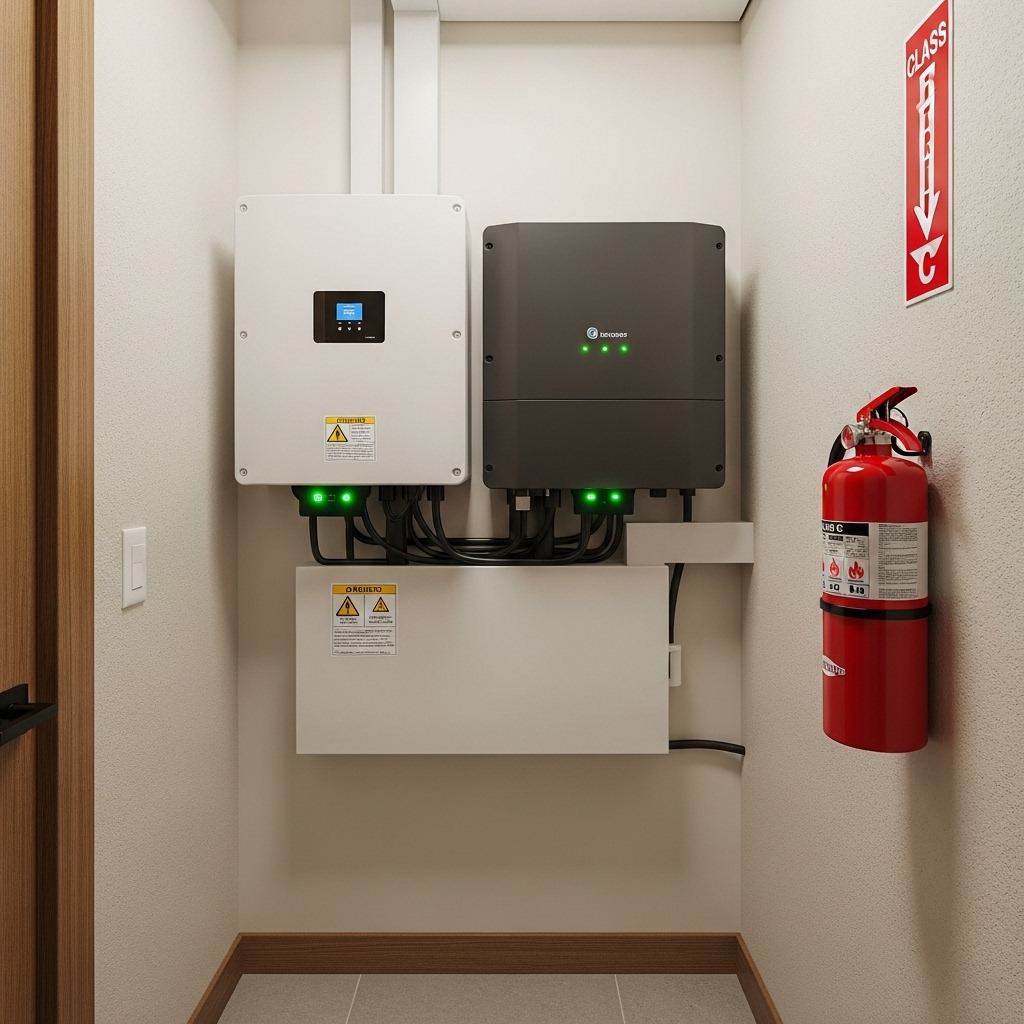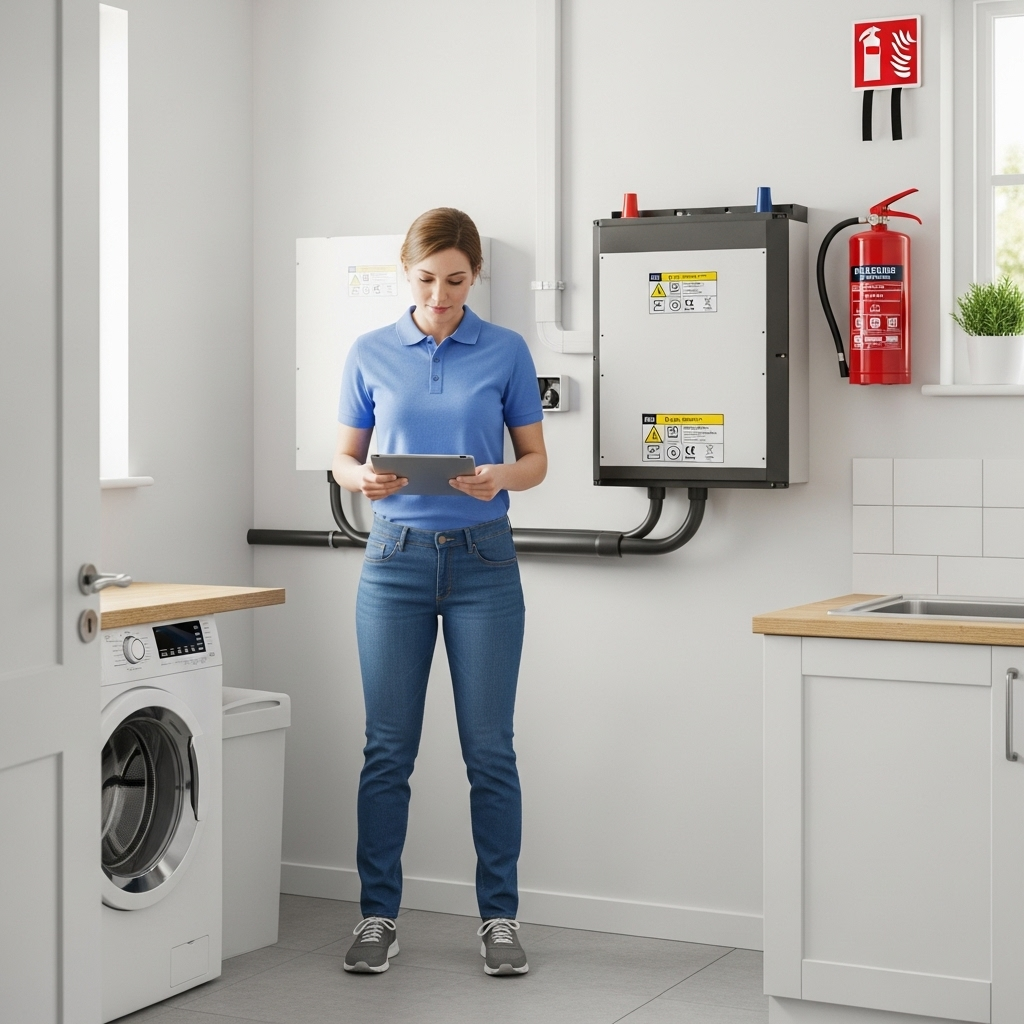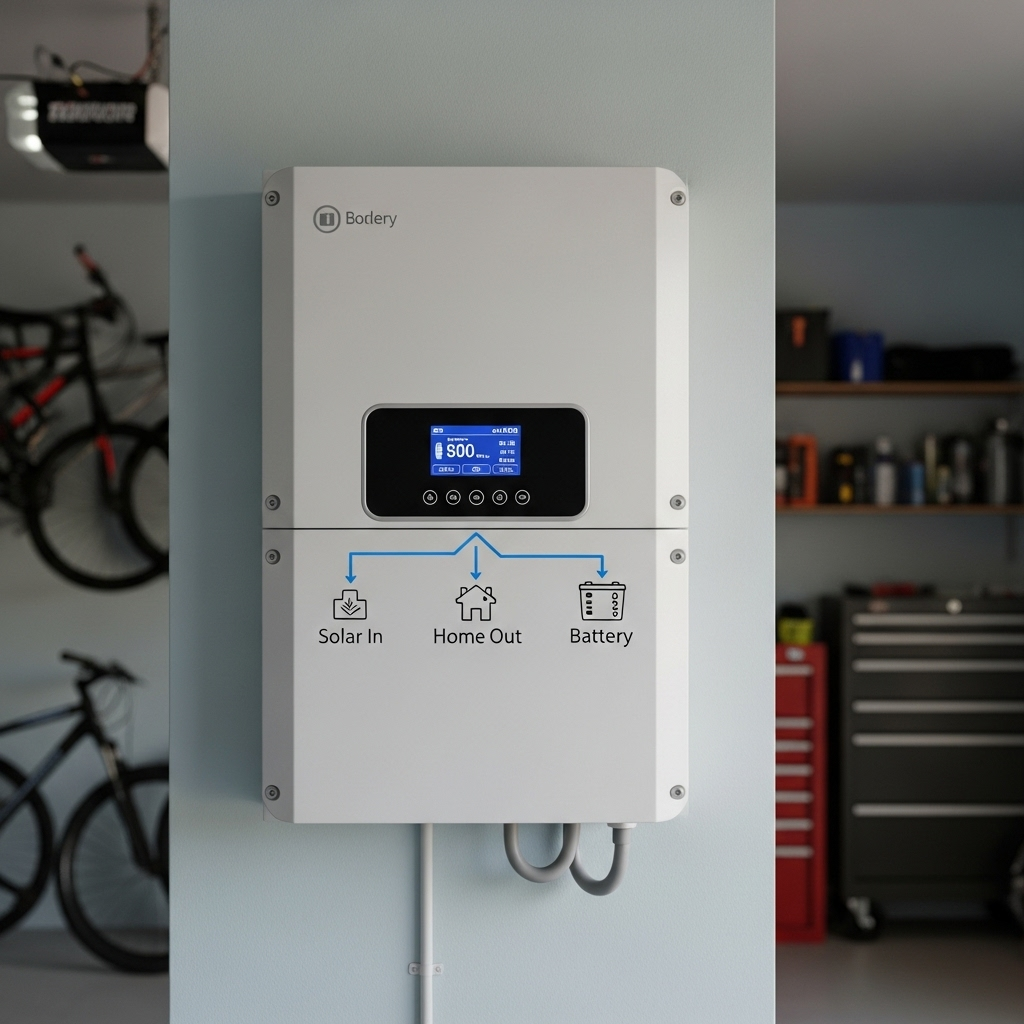A home energy storage system (ESS) is a significant step toward energy independence. It provides backup power and helps you manage your energy usage efficiently. To ensure this system operates reliably and safely for years, proactive maintenance is crucial. This blueprint provides a clear, actionable plan for ESS care, covering everything from routine inspections to emergency preparedness.
Foundational Safety Protocols for Your Home Energy Storage System
Safety is the cornerstone of any home energy system. Establishing correct safety protocols from day one protects your family, your property, and your investment. It begins with proper installation and a clear understanding of how the system operates.
Proper Installation and Location
A correct installation is your first line of defense. Always use a certified professional for the initial setup of your home ESS. They will ensure that the system complies with local electrical codes and manufacturer specifications. The location of the unit is equally important. Your ESS should be installed in a clean, dry, and well-ventilated area, away from direct sunlight and any flammable materials. Maintaining a stable operating temperature prevents overheating and prolongs battery life. Adhering to established technical standards, like those outlined in reports such as the Grid Codes for Renewable Powered Systems, is critical for ensuring that home systems are both safe and effective contributors to the larger energy grid.
Understanding System Alerts and Emergency Procedures
Familiarize yourself with your system’s monitoring software. Most modern home energy storage systems come with an application that displays status, performance, and alerts. Common alerts may indicate overheating, a low state of charge, or a connection issue. Know the emergency shutdown procedure detailed in your user manual. This allows you to safely power down the system if you suspect a problem. It is also wise to keep an appropriate fire extinguisher (Class C or ABC, rated for electrical fires) in an accessible location nearby.
The Essential ESS Maintenance Checklist: A Routine for Reliability
Consistent maintenance prevents small issues from becoming major problems. By following a simple, structured routine, you can keep your home ESS running at peak efficiency and extend its operational lifespan. This checklist breaks down tasks into manageable monthly, quarterly, and annual actions.
Monthly Visual Inspections
Once a month, take a few minutes to perform a visual check. Look for any signs of physical damage to the enclosure or cables. Ensure all vents are clear of dust, debris, or obstructions to maintain proper airflow. Check that all connections appear secure and that there are no signs of corrosion on terminals. This simple walk-around can help you spot potential issues early.
Quarterly Performance Analysis
Every three months, review your system's performance data through its monitoring app. Pay attention to key metrics like the typical State of Charge (SoC), the Depth of Discharge (DoD), and overall energy throughput. A sudden drop in capacity or efficiency could indicate an underlying issue that needs attention. Consistent data monitoring helps you establish a baseline for normal operation. For a detailed breakdown of these performance indicators, you can consult this ultimate reference on solar storage performance, which offers valuable insights into what the numbers mean for your system's health.
Annual Professional Check-up
An annual inspection by a qualified technician is highly recommended and often required to maintain your warranty. The technician will perform tasks beyond a simple visual check, such as testing battery cell balance, checking the torque on electrical connections, and installing critical firmware updates. According to the U.S. Department of Energy, streamlined and professional installation and maintenance practices are key to reducing long-term costs and ensuring system longevity. This professional check-up ensures every component, including the solar inverter, is functioning correctly.
Maximizing Performance and Lifespan Through Smart Usage
How you use your home ESS every day has a direct impact on its health. Smart management of charging cycles and operating conditions can significantly enhance its lifespan and return on investment.
Optimizing Charge and Discharge Cycles
Most modern lithium batteries, such as LiFePO4, are durable, but their lifespan is still measured in charge cycles. To maximize this, avoid regularly draining the battery to zero or leaving it fully charged for long periods. Operating the battery primarily between 20% and 80% SoC can reduce stress on the cells and extend its useful life. Many systems allow you to set these thresholds in the control software.
The Role of Software and Firmware Updates
The software that manages your ESS is just as important as the hardware. Manufacturers release updates to improve efficiency, add new features, and patch security vulnerabilities. Check for firmware updates regularly or enable automatic updates if the option is available. These updates ensure your system is running with the latest performance algorithms and safety protocols.
Troubleshooting Common ESS Issues
Even with proper care, you may occasionally encounter issues. Many common problems can be resolved with simple troubleshooting steps. For any issue involving opening the unit or handling wiring, contact a professional.
Disclaimer: This information is for guidance only and is not a substitute for professional technical advice.
| Issue | Possible Cause | Recommended Action |
|---|---|---|
| System Not Charging | Tripped circuit breaker; Soiled solar panels; Loose connection | Check your home's breaker panel. Clean solar panels if they are covered in dirt or debris. Visually inspect connections to the inverter and battery. |
| Rapid Power Drain | A new, large appliance is drawing power; Degraded battery capacity | Check your energy monitoring app to identify high-consumption devices. If capacity has permanently decreased, contact your installer for a battery health check. |
| Unexpected Shutdown | Overheating; Low battery level; System fault | Ensure vents are clear and the ambient temperature is within the operating range. Allow the system to recharge. If it persists, restart the system and check for error codes. |
| Communication Error | Loss of internet connection; Router issue | Check your home's Wi-Fi network. Restart your router and the ESS communication gateway if applicable. |
A Proactive Approach to Long-Term System Health
Maintaining your home energy storage system is not complex. It is about establishing a routine of simple, proactive checks. By combining regular visual inspections, performance monitoring, and professional support, you create a robust framework for care. This diligence ensures your system remains a safe, reliable, and efficient source of power, securing your energy independence for the future. As the International Energy Agency notes in its research on system integration of renewables, well-managed distributed energy resources like home ESS play a vital role in creating a more resilient and flexible energy grid for everyone.
Frequently Asked Questions
How often should I inspect my home ESS?
A quick visual inspection monthly is recommended, with a more detailed performance check quarterly. An annual professional inspection is crucial for long-term health and warranty compliance.
What are the signs of a failing ESS battery?
Key signs include a noticeable decrease in capacity (not holding a charge as long), frequent error messages, the unit feeling unusually hot, or any physical changes to the battery case like swelling.
Can I perform all maintenance myself?
Homeowners can safely perform visual checks, cleaning, and performance monitoring. However, any tasks involving electrical connections or internal components should be left to a certified technician to ensure safety and avoid voiding the warranty.
What type of fire extinguisher is best for a home ESS?
A Class C or ABC dry chemical fire extinguisher is suitable for electrical fires. It should be stored in an accessible location near the system but not directly inside the battery enclosure.





Leave a comment
All comments are moderated before being published.
This site is protected by hCaptcha and the hCaptcha Privacy Policy and Terms of Service apply.